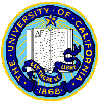 |
Scott Jordan | |
|
|
These papers are intended for people with a background in communications policy:
Classification of broadband Internet access service
The FCC’s recent Restoring Internet Freedom Order reclassified broadband Internet access service from a telecommunications service to an information service. The Order claims that its reclassification is justified as a reinterpretation of relevant statute, and is bolstered by its reinterpretation of relevant precedent from both the FCC and the courts.
However, the Supreme Court has previously set out in Brand X a specific test for determining whether Internet access service is a telecommunications service, and that test states that the determination turns on the factual particulars of how Internet technology works and how it is provided.
In this paper, we analyze the reclassification of broadband Internet access service in the Restoring Internet Freedom Order, and the relevant precedent from the FCC and the courts from the 1970s through 2017. We find that the Restoring Internet Freedom Order improperly reinterprets the definition of broadband Internet access service to include applications such online storage, parental controls, and email; makes several critical errors in its determination that ISP DNS and caching fall within the telecommunications systems management exception; and reinterprets the definition of information service in a manner that both misconstrues precedent and produces an internal inconsistency that invalidates the interpretation. We find that the Order does not properly apply the Brand X test for determining whether the telecommunications components of broadband Internet access service are separable from any information service capabilities of the service, and that a proper application of the Brand X test would have determined that broadband Internet access service is a telecommunications service.
Broadband Internet Access Service is a Telecommunications Service, Federal Communications Law Journal, vol. 71 issue 2, Feb. 2019, pp. 155-252.
Classification of mobile broadband Internet access service
The FCC’s Restoring Internet Freedom Order reclassified mobile broadband service from a commercial mobile radio service to a private mobile radio service, thereby eliminating common carrier regulation of the service. The reclassification is an incredible assertion: that the most important public mobile service of our time is classified under statute as a private mobile service. We analyze the relevant precedent from the 1940s through 2017. We find that the Order’s lack of consideration of the relevant precedent and technology undermines its interpretation of the statute on which it relies. The Order’s reversion to the 1994 definitions of public switched network and interconnected service ignores the growth of the public switched network to include the Internet. The Order’s conclusion that the public switched telephone network and the Internet are separate non-interconnected networks is factually wrong. Critically, when interpreting interconnection, the Order ignores the fact that in order for meaningful communication to occur, the users’ devices and subscribed services must be compatible. A proper interpretation of relevant statute and precedent leads to the opposite conclusion of the Order, that mobile broadband service is a commercial mobile service. This finding lays the foundation for reinstatement of net neutrality protections on mobile broadband service.
Mobile Broadband Internet Access Service is a Commercial Mobile Service, and Hence Must Be Regulated as a Common Carrier Service, Information & Communications Technology Law, vol. 27 no. 3, 2018, pp. 304-366.
Portions of this work were supported by NSF. Any opinions, findings, conclusions or recommendations expressed in this material are those of the author(s) and do not necessarily reflect the views of the National Science Foundation or IEEE. This material is presented to ensure timely dissemination of scholarly and technical work. Copyright and all rights therein are retained by authors or by other copyright holders. All persons copying this information are expected to adhere to the terms and constraints invoked by each author's copyright. One print or electronic copy may be made for personal use only. Permission must be obtained from the copyright holder for systematic or multiple reproduction, distribution to multiple locations via electronic or other means, duplication of any material in these papers for a fee or for commercial purposes, modification of the content of these papers, reprinting or republishing of this material for advertising or promotional purposes or for creating new collective works for resale or redistribution to servers or lists, and to reuse any copyrighted component of this work in other works.